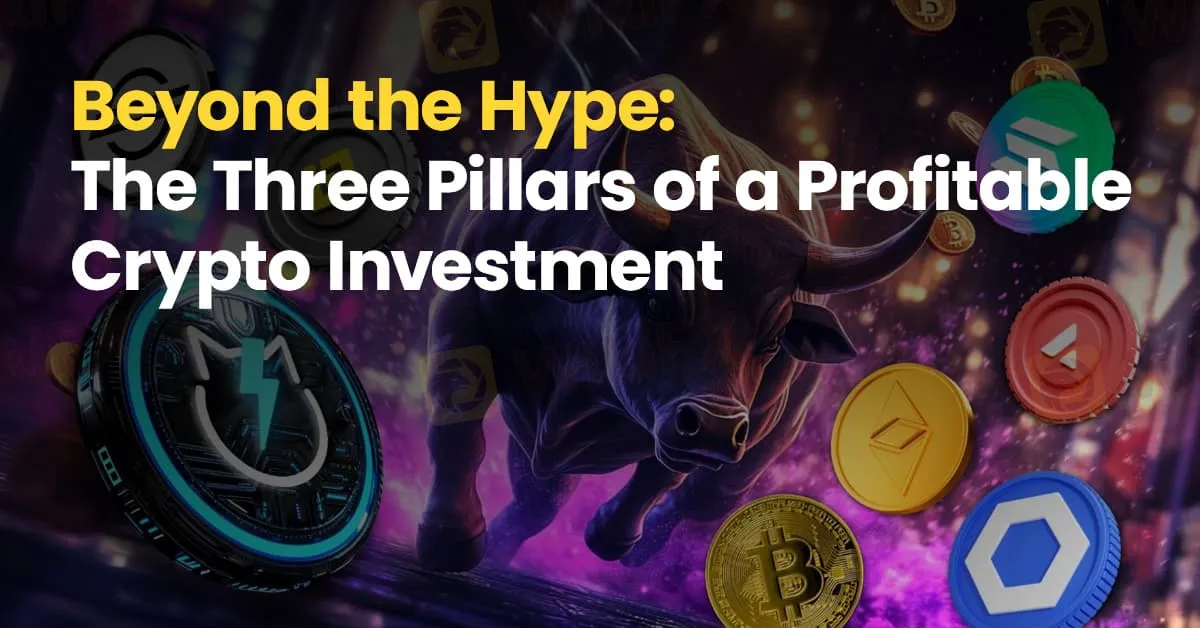Beyond the Hype: The Three Pillars of a Profitable Crypto Investment
Abstract:Three key factors distinguish sustainable, high-potential crypto projects from fleeting speculative bubbles: scalability, security, and decentralisation. Understanding these elements can help investors make informed decisions and avoid costly pitfalls.

The world of cryptocurrency investment is as exhilarating as it is risky. While market speculation often drives meteoric price rises, it is also responsible for dramatic crashes, leaving uninformed investors nursing heavy losses. To navigate the volatile landscape of digital assets, traders must assess projects through a fundamental lens rather than relying on hype-driven momentum.
Three key factors distinguish sustainable, high-potential crypto projects from fleeting speculative bubbles: scalability, security, and decentralisation. Understanding these elements can help investors make informed decisions and avoid costly pitfalls.

Scalability refers to a blockchains ability to handle an increasing number of transactions efficiently. A project that lacks scalability may struggle to accommodate growing demand, leading to slower transactions and higher fees, which are major deterrents for widespread adoption.
Bitcoin, for example, has faced scalability challenges due to its limited block size, resulting in network congestion during periods of high activity. Ethereum has encountered similar issues, prompting the transition to Ethereum 2.0, which implements a proof-of-stake (PoS) consensus mechanism to enhance throughput.
Investors should examine whether a project has implemented, or is actively developing, scalability solutions such as layer-2 protocols, sharding, or adaptive consensus mechanisms. A cryptocurrency that can efficiently process transactions without compromising speed or cost is more likely to sustain long-term growth and adoption.

Security is paramount in the cryptocurrency space, where cyber threats, hacks, and vulnerabilities pose significant risks. A blockchain project must demonstrate robust security measures to protect its users, transactions, and underlying infrastructure.
The security of a crypto project hinges on multiple factors, including its consensus mechanism, smart contract integrity, and historical resilience against attacks. Proof-of-work (PoW) blockchains, like Bitcoin, rely on extensive computational power to deter malicious actors, while PoS-based systems provide security through economic incentives. However, newer consensus models must be scrutinised for potential weaknesses before being deemed trustworthy.
Additionally, smart contract security is a critical area of concern. High-profile breaches, such as the 2021 Poly Network hack, have exposed vulnerabilities in inadequately audited contracts. Investors should seek projects that conduct regular security audits, engage in bug bounty programs, and maintain transparency regarding protocol updates.

Decentralisation is a fundamental principle of blockchain technology, ensuring that control over a network is distributed rather than concentrated in the hands of a few entities. The degree of decentralisation directly impacts a projects resistance to censorship, manipulation, and governance failures.
Some projects tout decentralisation while maintaining a highly centralised node structure or governance model, which undermines the trustless nature of blockchain. Investors should examine factors such as the number of active nodes, the distribution of token ownership, and the transparency of governance frameworks to assess whether a project genuinely upholds decentralisation.
While full decentralisation may introduce certain inefficiencies, such as slower decision-making processes, a well-balanced approach that minimises central points of failure while maintaining adaptability is key to long-term resilience.
In summary, investing in cryptocurrency is not just about riding waves of market speculation—it requires a strategic approach grounded in fundamental analysis. Scalability, security, and decentralisation are three crucial pillars that define the sustainability and success of a blockchain project. By evaluating these factors, traders can make informed decisions, reduce exposure to unnecessary risks, and position themselves for long-term profitability in the dynamic crypto space.
In a market flooded with projects promising revolutionary technology, only those with strong fundamentals will stand the test of time. The question remains: Are you investing in hype, or are you investing in value?

Read more

Broker Comparsion: FXTM vs AvaTrade
FXTM and AvaTrade are two well-established online brokers offering forex and CFD trading across global markets. Both enjoy strong reputations and high ratings on WikiFX—FXTM holds an AAA overall rating, while AvaTrade scores 9.49/10, indicating they’re regarded as reliable choices by the community. However, since brokers have great reputation in the industry, how do we know which one is more suitable for individuals to invest in? Today's article is about the comparison between FXTM and AvaTrade.

Shocking Move: Yen Breaks Past 140 Barrier!
The yen's breakout above the 140 mark has caught global attention, and the reasons behind it are more than technical.

FINRA fines SpeedRoute for alleged rule violations
The Financial Industry Regulatory Authority (FINRA) has imposed a $300,000 fine on SpeedRoute LLC for a series of supervisory, risk management, and anti-money laundering (AML) program deficiencies spanning from 2017 to the present. Of this amount, $75,000 is payable to FINRA, with the remainder offset by SpeedRoute’s limited ability to pay. In addition to the monetary penalty, SpeedRoute has been censured and ordered to overhaul its compliance framework, including enhancing its written supervisory procedures (WSPs) for market access controls and strengthening its AML program.

Nigeria's Oil Crisis: How Are Stakeholders Responding?
Despite being rich in oil, Nigeria struggles with refining shortages. What’s behind this paradox, and how are different actors reacting?
WikiFX Broker
Latest News
Love, Investment & Lies: Online Date Turned into a RM103,000 Scam
Broker Took 10% of User's Profits – New Way to Swindle You? Beware!
Pi Network: Scam Allegations Spark Heated Debate
Broker Comparsion: FXTM vs AvaTrade
Account Deleted, Funds Gone: A New Broker Tactic to Beware Of?
Broker’s Promise Turns to Loss – Funds Disappear, No Compensation!
StoneX Subsidiary, Gain Global Markets Bermuda, Penalized for Trading Misconduct
El Salvador and U.S. Launch Cross-Border Crypto Regulatory Sandbox
The Instagram Promise That Stole RM33,000
Coinbase Launches Bitcoin Yield Fund for Institutional Investors
Rate Calc
